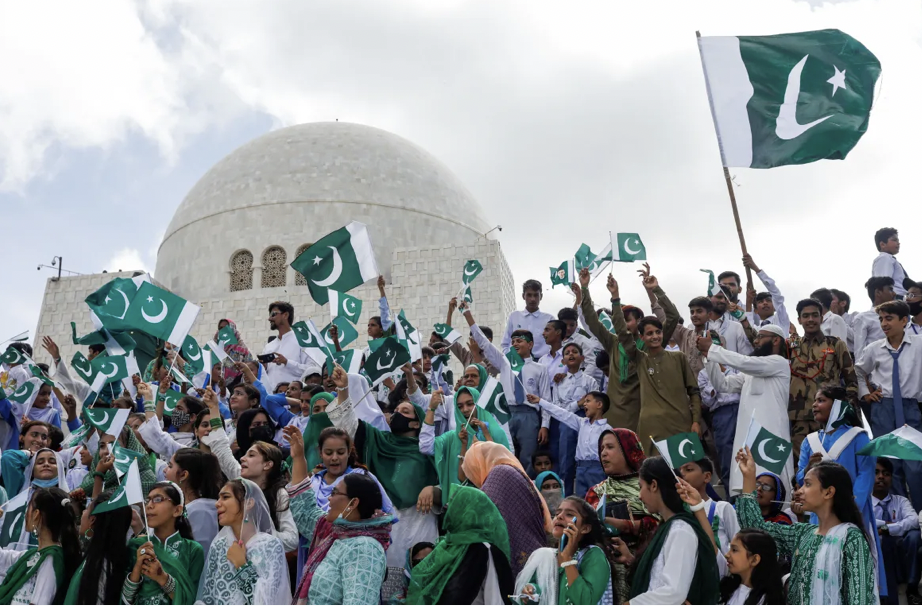Pakistan’s Compounding Crises Push it to the Edge
Pakistan is spiraling toward the brink of collapse. While the ongoing conflict in Ukraine and confrontation with China continue soaking up international attention, Pakistan’s multiple existential crises have gone largely unnoticed by international observers. But it shouldn’t. Currently, simultaneous economic, political, and environmental crises combined with a renewed terrorist movement threaten to collapse the country. As the world’s fifth-largest country and nuclear power, a Pakistani collapse could spiral into a catastrophic human rights disaster and destabilize the entire Indian subcontinent.
The most acute crisis Pakistan is facing is its total economic meltdown. Similar to regional neighbor Sri Lanka, Pakistan is currently facing a multi-faceted economic crisis that risks impoverishing tens of millions in one of Asia’s poorest countries. The crux of the problem is the country’s apparent addiction to debt. Since the turn of the millennium, Pakistan has doubled its debt once every 5 years, with debt growth outpacing GDP growth 4:1. But this money has been invested poorly, with comparable regional rivals India and Bangladesh overtaking Pakistan’s GDP per capita despite borrowing less. Beyond the unchecked borrowing, Pakistan’s industries are still broadly uncompetitive, with imports almost double the countries’ exports. This trade deficit even applies to agriculture, a sector that makes up nearly 50% of Pakistan’s workforce. Finally, with global interest rates rising, decades of reckless spending and mismanagement have caught up with the country. Pakistan’s debt-to-GDP ratio is nearly 70%, an exceptionally high level for such a weak economy. This staggering debt means nearly 85% of its government budget is spent servicing the debt, while the country considers an IMF bailout to stabilize its economy. The debt crisis has pummeled investor confidence, pushing inflation up to nearly 40%. In a desperate attempt to service its debt, the country is emptying its foreign currency reserves, causing shortages to ripple across Pakistan’s economy. This has shuttered many Pakistani factories while food shortages are so widespread they have caused several stampede deaths at subsidized food distributions.
Despite this economic calamity, Pakistan’s elites continue playing the blame game. Over the past two years, Pakistan’s military and intelligence elites have been in a bloody fight with populist Imran Khan. Khan, a former cricket star, took office after destroying Pakistan’s traditional two party-system with firebrand populist rhetoric. In a move many blame on the CIA and Pakistan’s army and intelligence agencies, opposition parties ousted Khan through a vote of no confidence in 2022. Khan refused to leave, sparking a constitutional crisis that the Supreme Court resolved with his removal. Despite being removed, Khan’s immense popularity remains a threat to Pakistan’s elites. The murder of prominent Pakistani military critic and journalist Arshad Sharif in Kenya and a failed assassination attempt against Khan himself hint that Pakistan’s fractured elite are fighting Khan for their survival.
The dysfunctional economy and political system left the Pakistani government under-equipped to handle another crisis, such as the 2022 flooding that devastated much of Pakistan’s south. Nearly 1,500 people died when catastrophic flood water ripped through the country’s Sindh province, causing nearly $30 billion in damages. While Pakistan certainly cannot be blamed for the floods nor the climate change that intensified it, the country’s crumbling economy and government mean it will take years for those affected to recover.
Recent months have witnessed the start of yet another crisis for Pakistan. The January 30th Taliban bombing of a Mosque in Peshawar that killed 101 people marked the beginning of another round of war in Pakistan’s fragile Northwestern frontier. While some Pakistanis celebrated the Taliban’s victory in Afghanistan in 2021, relations have drastically deteriorated since then. Despite Pakistan supporting the Taliban for many years, the Taliban’s Pakistani affiliate, the Tehrik-e-Taliban Pakistan, has withdrawn from a ceasefire agreement and reopened its violent insurgency against Pakistan. Since the Peshawar bombing, Pakistani security forces have clashed with Taliban forces across the country, as the possibility of an Afghan-Pakistani war looms ever closer.
Pakistan’s deluge of disasters includes a debt crisis, rampant inflation, political infighting, environmental disasters, terrorism, an imminent default, and food shortages. With the realistic options for pulling the country back from the brink running out, Pakistan could face a total collapse. If so, the global ramifications could be enormous. As the world’s 5th largest country, a Pakistani failed state could develop into a humanitarian crisis of epic proportions, with potentially millions seeking to leave the country. Even worse, Pakistan is in possession of nearly 165 nuclear warheads, with advanced ballistic missile delivery systems. These weapons falling into the hands of the Taliban, Iran, or ISIS could have devastating consequences for global security. With so much at stake, we can only hope that Pakistan’s beleaguered leadership can guide the country out of trouble.
Photo Credit: AlJazeera
